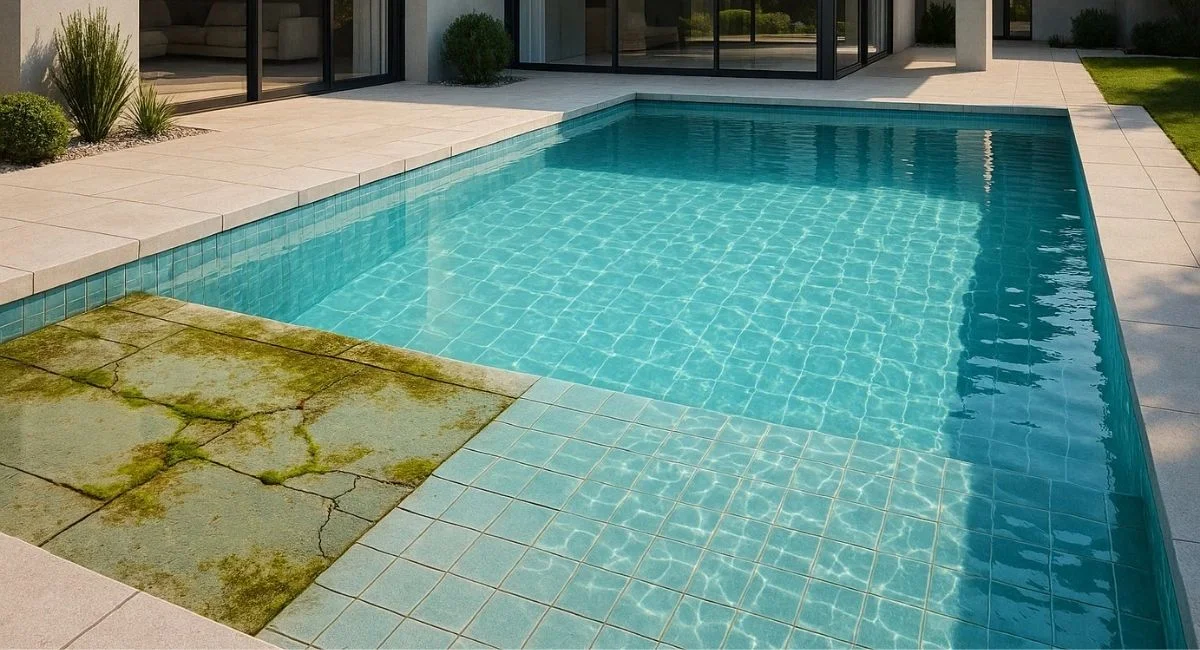
In pool projects, ensuring both aesthetic continuity and technical sustainability depends not only on visual preferences but also on proper maintenance and systemic integrity. Algae formation is one of the primary issues that disrupts this balance. In this article, you will find detailed insights into the causes of algae growth, its effects on the system, and Serapool’s recommended professional solutions.
Main Causes of Algae Formation in Pools
- During rainy seasons, nitrogen entering the pool transforms into nitrate in the water, becoming a nutrient source for algae. Inadequate water management accelerates this process and triggers algae formation.
- If the pool circulation system fails to operate efficiently, disinfectants cannot be evenly distributed throughout the water. This results in stagnant zones that provide a fertile environment for algae spores to develop.
- When chlorination and pH adjustments are poorly or inconsistently applied, the disinfecting power weakens, leading to uncontrolled algae growth.
- Microcracks that may occur on pool surfaces provide ideal adhesion points for algae. Mistakes in material selection or overlooked installation details can intensify this issue.
Effects of Algae on Pool Systems and Human Health
- While algae itself is not directly harmful, its uncontrolled spread creates an ideal habitat for bacteria. This can lead to skin irritation, eye burning, and respiratory issues, especially in allergic individuals.
- Algae-covered surfaces become slippery, posing serious fall risks for users. Additionally, the clarity and visual quality of the water deteriorate, negatively affecting user experience.
- Algae formation increases chlorine consumption, disrupting the system’s chemical balance. As chlorine combats algae, its effectiveness against bacteria decreases, rapidly diminishing water quality.
- Excessive algae growth may clog the filtration system and weaken water circulation, causing the entire maintenance cycle to break down.

Ways to Prevent Algae and Biofilm Formation
The most effective way to prevent algae and biofilm formation is to maintain both physical cleanliness and chemical balance simultaneously.
Regular brushing of the pool surface, walls, and waterline helps eliminate spores that may adhere to these areas. Supporting this with periodic backwashing of the filtration system ensures optimal circulation performance.
A lack of physical cleaning reduces the effectiveness of chemical treatments, making it the cornerstone of a successful maintenance routine.
To maintain this care, keeping the chemical values of pool water within ideal ranges is essential. In particular, maintaining a stable pH level between 7.2 and 7.6 ensures chlorine efficiency.
Basic chlorination should be performed daily, while shock chlorination should be done weekly, with the pump system operating for at least 24 hours afterward. This method is vital for eliminating invisible algae spores in the water.
Preventive chemical applications such as algaecides inhibit algae formation before it starts, while algaecide killers remove existing growth. However, these products must be used in conjunction with chlorination to be effective. A holistic and planned chemical treatment strategy helps prevent imbalances in the system.
As an alternative, mineral-based systems are becoming increasingly popular in international projects that demand high hygiene standards.
These systems, containing magnesium, sodium, and potassium chloride, offer effective protection against algae and bacteria with reduced chemical usage. They provide long-term hygiene while preserving the natural water balance.
In luxury projects, mineral systems stand out as a complementary solution that enhances user comfort.
Material Usage: Key to Maintaining Balance
Every chemical product must be applied with correct dosage and timing. Otherwise, undesirable outcomes may occur:
Excess algaecide may cause foaming and cloudiness, poor pH control may lead to chlorine imbalance, and excessive chlorine may result in skin, eye, and respiratory irritation.
Therefore, a measurement-based maintenance program is essential for the long-term health of the pool.

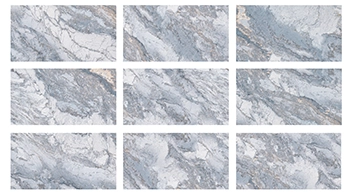

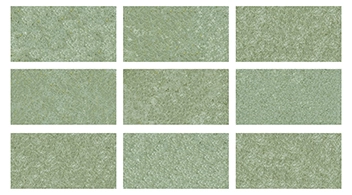

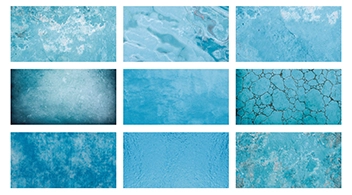
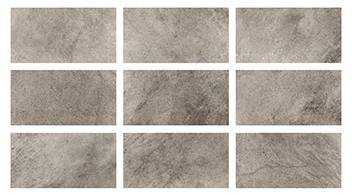


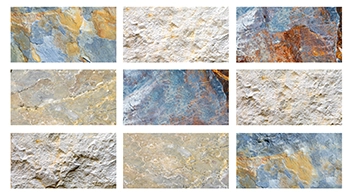
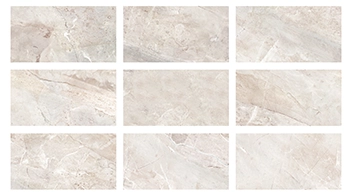

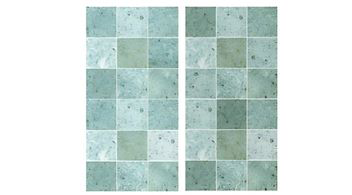




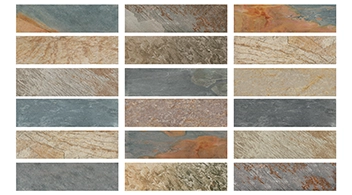
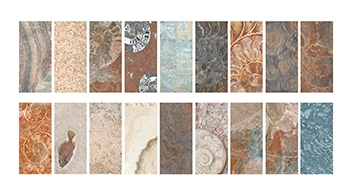

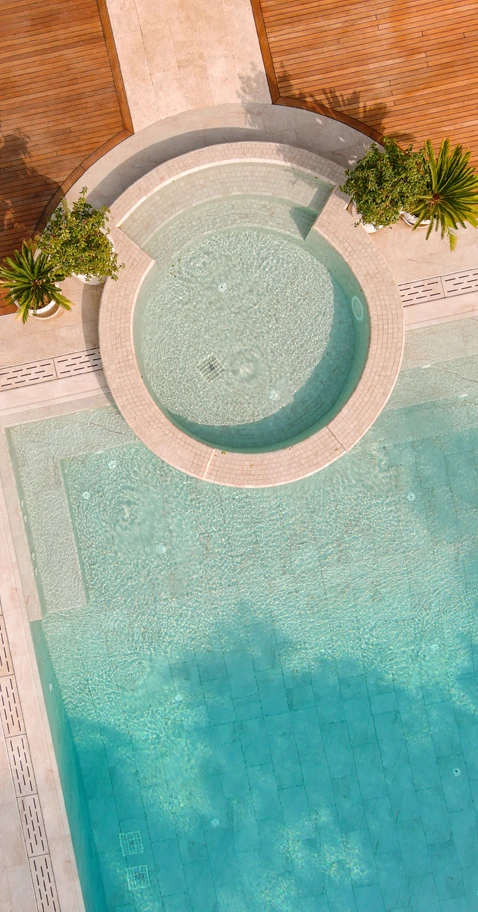



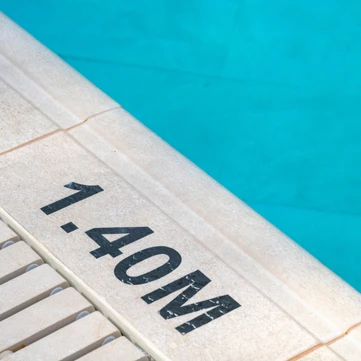
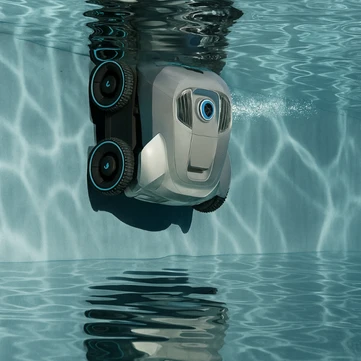
.webp)